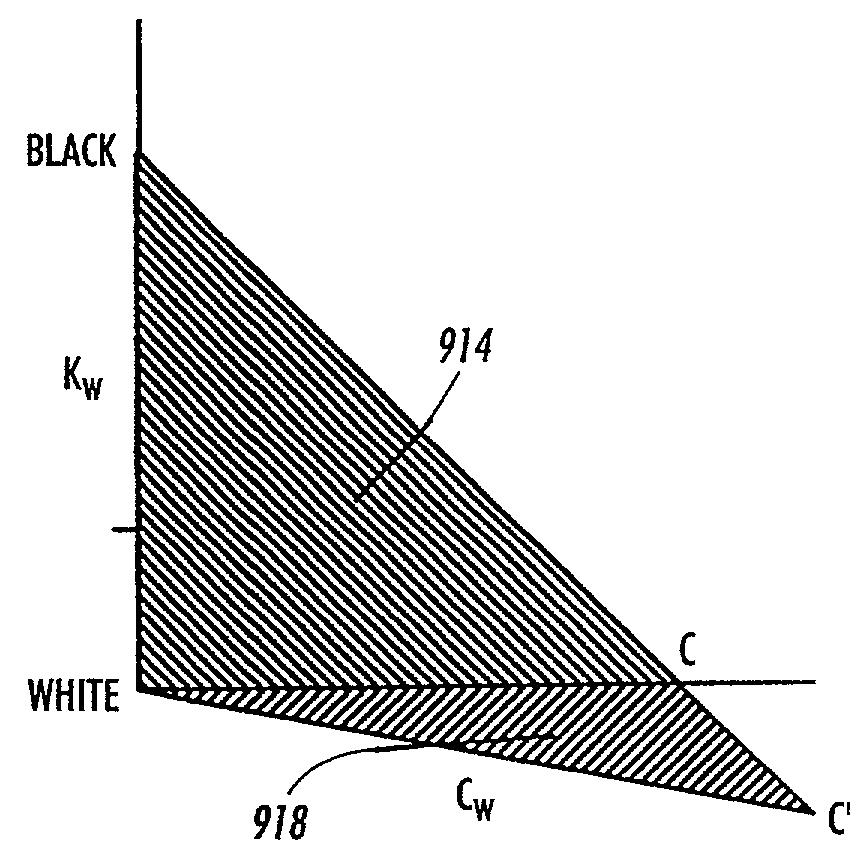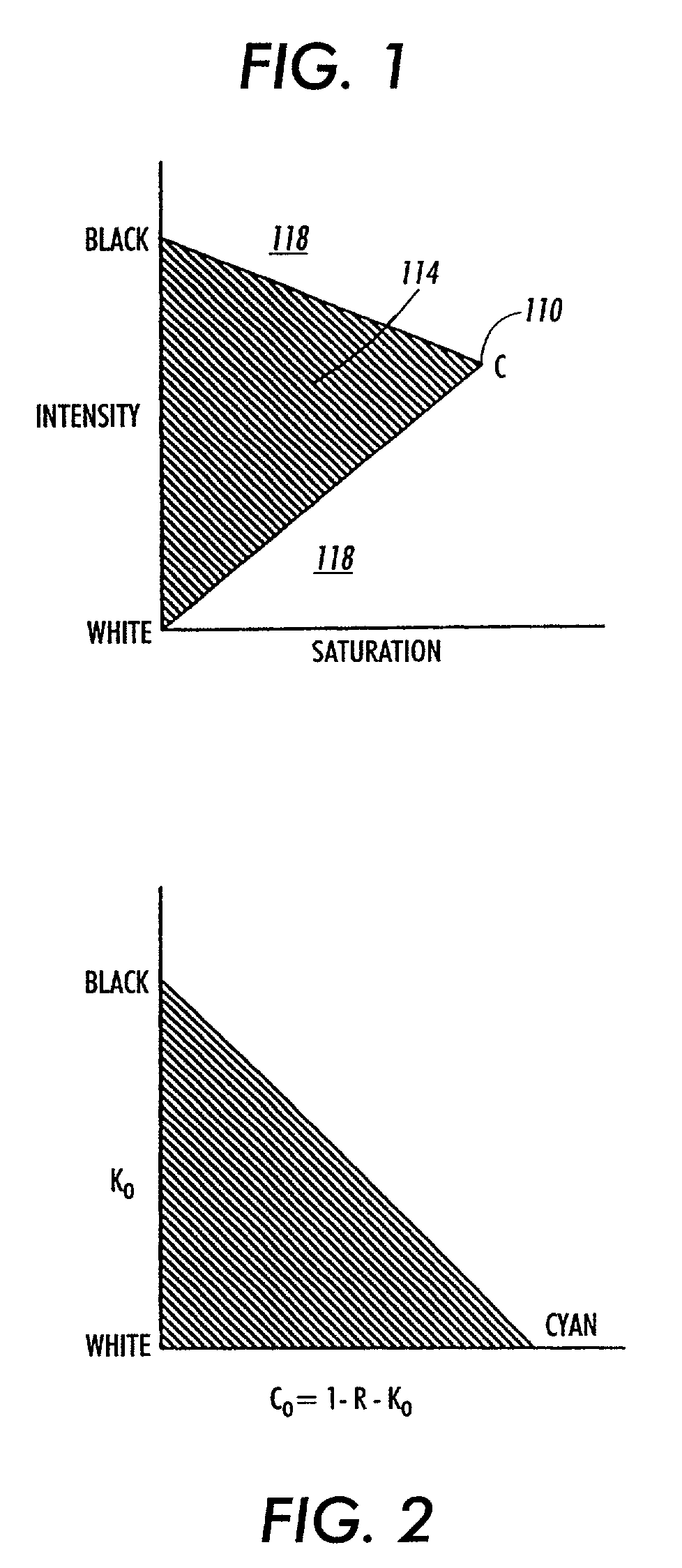Mapping color to colorant amounts when colorants have similar hue
a technology of colorant amount and colorant, which is applied in the field of mapping color to colorant amount when colorants have similar hue, can solve the problems of colorant similar hue, colorant redundantness, and inability to select a particular combination of redundant colorants to produce any given color, and achieve the effect of reducing the range of printable colors, and reducing the cost of color printing
- Summary
- Abstract
- Description
- Claims
- Application Information
AI Technical Summary
Benefits of technology
Problems solved by technology
Method used
Image
Examples
Embodiment Construction
[0040]The invention will be described in terms of exemplary embodiments. The exemplary embodiments are operative to map CMYK values to CMYC′M′Y′K values. Here, the primed values (C′, M′, Y′) represent colorant amounts for additional colorants that have hues similar to the hues of the C, M, Y colorants respectively. However, it is understood that the invention may be applied to other sets of colorants. For example, an additive color device containing red, green and blue (R, G, B) light sources, and secondary light sources (R′, G′, B′) with different saturation and lightness behaviors but similar hues to the RGB sources could be controlled by the methods of this invention.
[0041]The set of additional colorants (C′, M′, Y′) used in any given application is based on a desired use or effect. For example, where C′, M′, and Y′ are lighter versions of the original colorants they can be used to reduce contrast in the highlight portions of color space, thereby improving image quality. Alternat...
PUM
 Login to View More
Login to View More Abstract
Description
Claims
Application Information
 Login to View More
Login to View More - R&D
- Intellectual Property
- Life Sciences
- Materials
- Tech Scout
- Unparalleled Data Quality
- Higher Quality Content
- 60% Fewer Hallucinations
Browse by: Latest US Patents, China's latest patents, Technical Efficacy Thesaurus, Application Domain, Technology Topic, Popular Technical Reports.
© 2025 PatSnap. All rights reserved.Legal|Privacy policy|Modern Slavery Act Transparency Statement|Sitemap|About US| Contact US: help@patsnap.com



